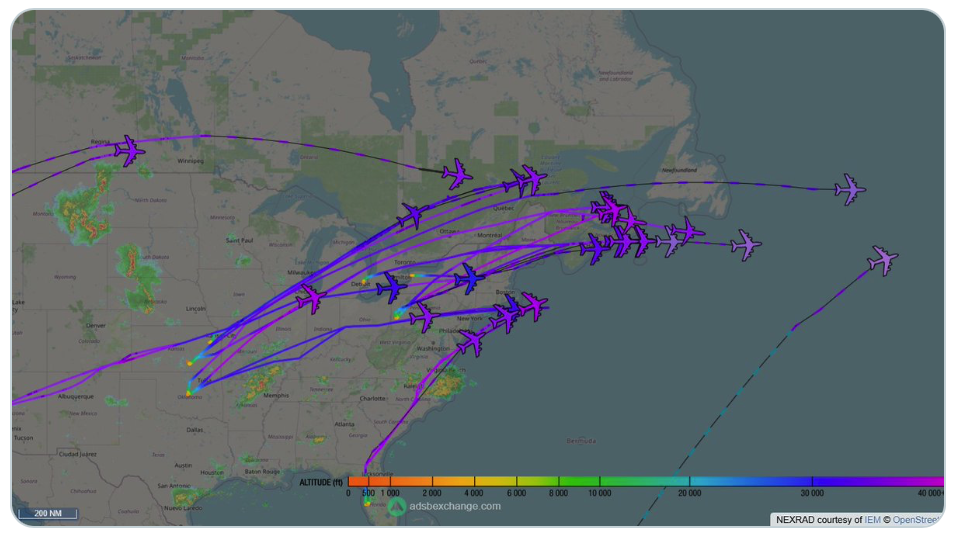First Look: Leupold BX-4 Range HD Gen 2 Binocular

We may earn revenue from the products available on this page and participate in affiliate programs. Learn More ›
Leupold is launching an updated rangefinding binocular today, the second generation of its BX-4 Range HD that has a measurably more powerful laser and improved optics.
Available in both 10×42 and 12×50 models, it’s Leupold’s investment in a category of optics that’s grown so fast and with such market penetration that many Western hunters wouldn’t consider going afield without a laser rangefinding (LRF) binocular. In a practical sense, it simplifies a hunter’s kit by combining a laser rangefinding monocular with a mid-magnification binocular. When deployed, it enables hunters and shooters the ability to determine a situationally adjusted range without taking their eyes off the target. That’s a key attribute for hunting guides and spotters for target shooters.
Photo by Scott Einsmann
See It
- Available in 10×42 and 12×50
- 1/4-20 tripod mount
- TBR/W and bow mode
- Uses CR2 batteries
- Red display
- Weight: 37 ounces
- Battery Life: 3,000 actuations
- Max Range: 1,300 yards (deer), 2,000 yards (trees), and 4,000 yards (reflective)
- Minimum Range: 12 yards
- Price: $1,600 (10×42) and $1,800 (12×42)
The new BX-4 Range HD Gen 2 nearly doubles the range of its first-generation BX-4 Range. While its 4,000-yard capabilities are limited to reflective targets, the Gen 2 model has a 2,000-yard range on trees (green foliage is exceptionally detectable by the laser’s wavelength), and an impressive 1,400-yard range on deer-sized game.
The unit’s red OLED display is sharp and easy to see against cluttered backgrounds. The Gen 2 version of the BX-4 Range HD includes a couple of Leupold’s most popular proprietary targeting packages: the archery-specific Archer’s Advantage software that considers arrow weight and velocity and peep height to calculate accurate archery parabolas, and the rifle-specific True Ballistic Range/Wind (TBR/W) technology that calculates bullet weight and velocity to derive angle-adjusted aiming solutions for specific loads and conditions.
Other attributes include control buttons that can be configured for either left- or right-handed users, the interchangeable Form-Fit eyecups that Leupold introduced last year on its non-ranging BX-4 Pro Guide HD Gen 2 models, and 25 groups of ballistic “families” that share bullet drop and drift attributes. Bowhunters will appreciate its 7-yard close range.
The 10×42 model retails for $1,599.99 while the 12×50 model retails for $1,799.99. Unlike many brands, Leupold doesn’t list a hiked-up MSRP on its website and then sell optics for a reduced Minimum Advertised Price (MAP) at retail. Instead, the listed price is the “true, on-the-shelf retail pricing,” according to the company.
Leupold has started and slowed LRF production intermittently in recent years. In 2019 it developed with partners an early LRF, dubbed the RBX-3000, but that product didn’t gain much market share. Leupold later introduced the first generation of the BX-4 Range, with a 2,600-yard capability. The LRF version that launches today is similar to that 2023 model, but with a faster and more powerful laser engine and improved optics. The Gen 2 version delivers a brighter, sharper image compared to the Gen 1 model, and its coatings — part of what Leupold calls its Elite Optical System — boost the visibility of the red display without washing out the image or exaggerating its blues and greens.
Read Next: Best Binoculars for Hunting
Testing the BX-4 Range in the Field
As a minimalist Western hunter, I appreciate the new Leupold LRF binocular as much for what it doesn’t do as for what it doesn’t do. I fundamentally don’t want a busy display or a galaxy of ballistic choices in an optic that is primarily configured for hunting. The BX-4 Range HD delivers fast and precise ranging plus just enough ballistics information to be useful for both bowhunters and rifle hunters without being distracting.
I used the new binocular – my test version was the 10×42 – in observation and ranging mode for a week of open-country coyote hunting in eastern Montana, and found the rangefinder to be fast and accurate. The optics are noticeably brighter and sharper than the first-generation BX-4 Range, though I didn’t quantify its increased low-light or resolution performance. The new binocular is a little heavy, but its relatively short length allows it to fit neatly in my mid-sized binocular harnesses.
The controls deserve special mention. I hunted in sub-zero temperatures, and the oversized heavily textured controls were easy to find and activate with mid-weight gloves. As a left-hander I was tempted to switch the ranging button from the right to the left side, but I didn’t get around to that particular task. I was happy with the Leupold as it came to me, with right-button ranging as the default operation.
The display is configurable to deliver aiming solutions in either MOA or MIL, plus holdover values in inches or centimeters or in increments tuned to the Custom Dial System on Leupold’s rifle scopes. The TBR/W feature enables users to input values for winds up to 10 mph. The unit is powered by a standard CR2 battery that loads into the rear end of the center focus wheel and is rated for 3,000 actuations. That design frees the forward end of the hinge to be connected to a tripod through a standard ¼-20 threaded adapter. I found the untextured thread cover hard to remove, but the BX-4 Range HD balances nicely on a tripod; the support enables precise ranging at extreme distances.
Read Next: Best Rangefinders for Hunting
As you’d expect, the unit has a built-in inclinometer, a fast scan mode, and delivers ranging solutions in first, last, or angle-adjusted (True Ballistic Range) modes.
The addition of Leupold’s interchangeable Form-Fit eyecups is a nice touch. Leupold introduced this feature last year, which gives users the choice of matching eyecup geometry to their own eye-socket anatomy. I prefer the sharply tapered eyecups, but other users who tested the new LRF prefer Leupold’s more squared-off version.
Where It Can Improve
The BX-4 Range HD Gen 2 is a solid entry into a crowded market that includes the EL Range from Swarovski and the Victory RF from Zeiss that can cost around $3,000, and a crop of models from Burris, GPO, Athlon, Vortex, and other brands that retail for less than $1,000. The new Leupold will compete with the Leica Geovid R and SIG’s KILO10K at about the same price point. Significantly, the new Leupold doesn’t wirelessly connect to a ballistic app, as the Vortex Fury HD with Applied Ballistics does, or to other connected devices, as SIG’s KILO10K does through its BDX system.
That’s hardly a deal-breaker for hunters, but it is an interesting choice, largely because the BX-4 Range HD’s 4,000-yard laser is so powerful that it would have stronger appeal to long-range shooters if it had the ability to customize its ballistics to the gun- and load-specific dope demanded by serious precision shooters. Or if it had the ability to connect to a Kestrel or Garmin weather meter or to a fully customizable ballistics program like Applied Ballistics. The trend in wirelessly connected LRF binoculars is to pack additional features such as GPS-enabled mapping into the optics, and it’s significant that Leupold didn’t add its onX mapping feature to the LRF binocular that it includes in its RX-5000 rangefinding monocular, introduced last year.
What It does Best
In all, the Gen 2 version of the BX-4 Range HD is a versatile optic that delivers an excellent image while giving users all the reach they need in a rangefinder. It’s priced in the meaty middle of the market, and because it combines the best of Leupold’s extensive family of rifle and archery rangefinders, it can capably shift from bow to rifle to target-shooting seasons.
Read the full article here







